Estimated Reading Time: 7 minutes
|Have you ever wondered why salmon has such a vibrant pink color? The answer lies in a powerful compound called astaxanthin, a natural pigment with a surprising range of potential health benefits.
With this blog, learn what is astaxanthin, its health benefits, sources, and where you can find this potent antioxidant.
What is Astaxanthin?

Astaxanthin belongs to a larger group of chemical compounds called carotenoids and is particularly celebrated for its potent antioxidant properties.
It stands out as an exceptional antioxidant, often referred to as "super vitamin E." This is because its antioxidant capabilities exceed those of other carotenoids like β-carotene, canthaxanthin, lutein, zeaxanthin, and vitamins C and E.
It is particularly effective in neutralizing singlet oxygen molecules and eliminating free radicals, highlighting its unparalleled efficiency in combating oxidative stress. For this reason, Astaxanthin is also used as a supplement for various health benefits, which we’ll discuss in upcoming sections below.
History of Astaxanthin
Astaxanthin has a fascinating history that stretches back millions of years. This powerful antioxidant was first discovered in 1907 by English scientist Richard Willstätter, who isolated its chemical structure. However, the true significance of astaxanthin remained largely unknown until recent years.
Astaxanthin originated in microalgae, specifically Haematococcus Pluvialis. Under optimal conditions, these algae thrive in freshwater environments. But, they can produce astaxanthin as a defense mechanism during periods of environmental stress, such as high light intensity, nutrient depletion, or extreme temperatures. This carotenoid acts as a protective shield, shielding the algae from damage caused by oxidative stress.
Popular Sources of Astaxanthin
Astaxanthin can be found in
- Microalgae: One of the most abundant sources of astaxanthin is algae. Microalgae, such as Haematococcus pluvialis, are widely known for their high astaxanthin content. These algae produce astaxanthin as a protective mechanism against environmental stressors, such as intense sunlight or nutrient deprivation. Astaxanthin content in microalgae can be further enhanced through cultivation techniques or stress induction methods.
- Yeast: Yeast is another source of astaxanthin. Some species of yeast, such as Phaffia rhodozyma, can produce astaxanthin in response to certain stress conditions. Due to its high concentration and availability, yeast-derived astaxanthin has gained popularity in aquaculture as a supplement for fish and shrimp feed.
- Seafood: Krill, shrimp, and crayfish are additional sources of astaxanthin. These crustaceans accumulate astaxanthin through their diet, primarily by consuming astaxanthin-rich algae in marine and freshwater environments.
Astaxanthin Content and their Usage based on Source
Refer to the table below on sources of astaxanthin with respect to content and usage:
|
Source |
Astaxanthin Content |
Usage |
|
Haematococcus pluvialis |
Highest among all sources |
Cultivated for dietary supplements and aquaculture feed |
|
Phaffia rhodozyma (yeast) |
Moderate |
Used in aquaculture to pigment salmon and trout |
|
Shrimp |
Low to moderate |
Consumed directly or used in animal feed |
|
Krill |
Low to moderate |
Extracted for dietary supplements |
|
Salmon |
Variable |
Consumed directly; astaxanthin content varies by species |
7 Astaxanthin Health Benefits - Popular Health Claims
1. Promotes Cardio-metabolic Health
Astaxanthin is a powerful antioxidant that has shown potential benefits for heart health. One key way it may support heart health is by reducing inflammation.
Chronic inflammation in the body could disrupt the normal functioning of the heart. Astaxanthin has been found to lower the levels of certain inflammatory markers in the body, thus reducing the risk of heart disease.
Moreover, astaxanthin may inhibit the oxidation of Low-Density Lipoprotein (LDL) cholesterol. LDL cholesterol, also known as "bad" cholesterol, tends to oxidize and form plaques in the arteries, leading to atherosclerosis. By preventing the oxidation of LDL cholesterol, benefits of astaxanthin may aid prevention of the build-up of plaque in the arteries.
2. Benefits of Astaxanthin: Could Support Eye Health

Astaxanthin has been shown to have numerous benefits for eye health. One of its primary astaxanthin health benefits is its ability to protect against oxidative damage. As the eye is highly susceptible to oxidative stress, astaxanthin's antioxidant properties help neutralize harmful free radicals, which can lead to various eye conditions such as cataracts and age-related macular degeneration.
Another benefit of astaxanthin for eye health is its potential to alleviate eye fatigue and strain. Prolonged exposure to digital screens and other visual activities can cause eye discomfort, but astaxanthin has been found to improve visual acuity and reduce eye fatigue, resulting in improved overall eye comfort.
In addition, astaxanthin aids in improving blood flow to the retina, the light-sensitive tissue lining the back of the eye. By enhancing blood circulation, this powerful antioxidant ensures that the retina receives a sufficient supply of essential nutrients and oxygen, promoting optimal visual function.
3. May Reduce Symptoms of Metabolic Syndrome

Astaxanthin plays a significant role in potentially reducing the symptoms of metabolic syndrome. Metabolic syndrome is a cluster of conditions — including high blood pressure, high blood sugar, excess body fat around the waist, and abnormal cholesterol or triglyceride levels — that occur together, increasing the risk of heart disease, stroke, and type 2 diabetes.
Astaxanthin's antioxidant activity may combat oxidative stress, a key factor in the development and progression of metabolic syndrome. By neutralizing free radicals, Astaxanthin helps protect cells and tissues from oxidative damage, thus potentially reducing inflammation and improving insulin sensitivity.
This can lead to better control of blood sugar levels and a reduction in risk factors associated with metabolic syndrome.
4. Benefits of Astaxanthin: May Reduce Inflammation

Inflammation is a natural response by the body's immune system to injury or infection, but chronic inflammation can lead to various diseases, including heart disease, diabetes, and arthritis. Astaxanthin's ability to reduce inflammation is attributed to its exceptional antioxidant capacity, which surpasses that of other antioxidants like vitamin E and beta-carotene.
Astaxanthin combats oxidative stress, a key driver of inflammation, by neutralizing free radicals and protecting cells from damage. This action can help mitigate the chronic inflammatory processes that contribute to the development and progression of many chronic conditions.
By incorporating Astaxanthin into a balanced diet, you may experience benefits of astaxanthin, such as reduced inflammation and a lower risk of inflammation-related diseases.
5. Astaxanthin Health Benefits: May Reduce Fat in the Liver

Astaxanthin has shown promise in reducing liver fat, a condition often associated with Non-Alcoholic Fatty Liver Disease (NAFLD). NAFLD is the most common liver disorder worldwide, characterized by an accumulation of fat in liver cells that is not caused by alcohol consumption.
If left untreated, it can lead to more severe liver conditions, such as steatohepatitis, fibrosis, and cirrhosis. Astaxanthin's anti-inflammatory and antioxidant properties are key to its potential benefits in managing liver fat content.
Astaxanthin may help reduce liver fat through its powerful antioxidant capabilities, which can protect liver cells from oxidative stress.
Oxidative stress is a significant factor in the development and progression of NAFLD, as it can lead to cell damage, inflammation, and fibrosis in the liver. By neutralizing free radicals and reducing oxidative stress, benefits of Astaxanthin such as prevent the initiation and progression of liver damage.
6. Could Help with Cognitive Health
As an antioxidant, benefits of astaxanthin is thought to combat oxidative stress, a condition linked to cognitive decline. There are various studies that aim to understand whether the reduction of oxidative stress in neural tissues, facilitated by compounds like astaxanthin, could support cognitive functions, including memory and attention.
The relationship between astaxanthin and cognitive health involves complex biological mechanisms and is subject to ongoing research. The scientific community continues to examine astaxanthin's role in cognitive health to confirm any potential benefits and understand the underlying mechanisms.
7. Supports Joint Health
Astaxanthin is being explored for its potential applications in managing joint pain, including conditions such as rheumatoid arthritis and carpal tunnel syndrome.
Rheumatoid arthritis affects close to 20% of Americans, making it a significant health concern. Early research into astaxanthin's effectiveness suggests that it may reduce inflammation and alleviate pain associated with arthritis, offering hope for those affected by these conditions.
Astaxanthin - Dosage Guidelines & Precautionary Measure

Generally, the suggested dosage of astaxanthin ranges from 6 mg to 12 mg per day, a quantity that can be met through certain enriched algae-based or krill oil supplements.
It's important to note that the optimal dosage for astaxanthin has not yet been established with certainty. However, given astaxanthin's classification as a carotenoid related to Vitamin A metabolism—a fat-soluble vitamin—it's advisable to consume astaxanthin with a meal to enhance its absorption.
Closing Remarks on Benefits of Astaxanthin
Astaxanthin is a remarkable natural compound with a wide range of potential health benefits. From supporting heart and eye health to offering anti-inflammatory and antioxidant effects, it represents a powerful tool in the quest for better health and well-being.
If considering Astaxanthin supplements, choosing high-quality products and consulting with a healthcare provider is crucial to ensure they align with your health goals and needs. Our commitment to your satisfaction and well-being is unwavering, and we're here to support you on your journey toward optimal health.




















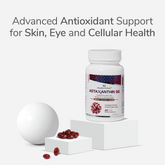

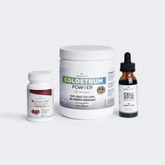

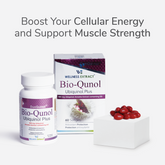

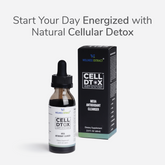



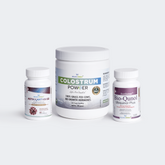

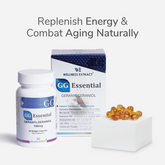

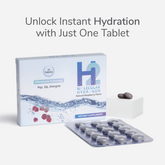



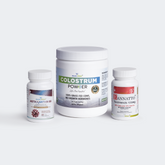

2